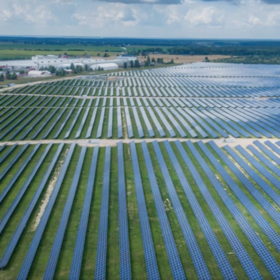India can potentially create about 3.4 million jobs (short- and long-term) by deploying 238 GW of new solar and 101 GW wind capacity between FY2021-22 and FY2029-30 to achieve its ‘500 GW by 2030’ non-fossil capacity target. A new workforce of about one million could be employed to take up these green jobs over the eight fiscal years. This would be ten times more than an estimated 1.1 lakh (110,000) of the workforce employed by the solar and wind sector in FY2020-21, according to an independent study released today by the Council on Energy, Environment and Water (CEEW), Natural Resources Defense Council (NRDC) and Skill Council for Green Jobs (SCGJ).
The study ‘India’s Expanding Clean Energy Workforce’ highlighted that most of the new jobs would be generated by small-scale renewable energy projects such as rooftop solar and mini and micro-grid systems compared to utility or large-scale projects like solar parks. Jobs created are different from the workforce needed, as one worker can perform more than one job.
As per the study, rooftop solar installations (106 GW) would create 80% of the overall 3.4 million jobs, utility-scale solar (with 132 GW) 16%, and wind (101 GW) 4%.
The CEEW-NRDC-SCGJ analysis also highlighted the adverse impact of the pandemic on employment in the renewable energy sector. In comparison to 12,400 new workers employed in the sector in FY19, only 5,200 new workers were employed in FY2019-20 and 6,400 were employed in FY2020-21. In FY2020-21, a majority of the new workers were employed in the rooftop solar segment where annual capacity additions grew by 9% over FY2019-20 and accounted for 1.4 GW capacity.
The study further found that India has successfully trained 78,000 people under the Suryamitra training program, between 2015 and 2017, to improve the availability of skilled workers for clean energy projects.
Dr Arunabha Ghosh, CEO, CEEW said: “India’s ambitious renewable energy targets provide an opportunity to deliver on jobs, growth, and sustainability while transitioning to a low-carbon economy. The upcoming Union Budget must especially focus on scaling up rooftop solar, mini and microgrid systems, and domestic solar manufacturing to maximize the employment opportunities in the sector. Further, to accelerate the deployment of solar parks and increase the uptake of decentralized renewable energy applications such as solar pumps and rooftops in rural India, it would be critical to train the rural youth and make them employable in various parts of the renewables ecosystem.”
Sameer Kwatra, Director, India Program at NRDC said: “India’s unprecedented renewables journey can set a new paradigm on how countries pursue prosperity without adding carbon to the atmosphere. With nearly 700 million people under the age of 30, creating clean futuristic jobs is a priority for the country. Powering the economy through renewable energy will not only enhance energy independence, avoid carbon emissions and air pollution, but also help meet India’s employment goals. The time to invest in renewable energy technologies and skillset of the future is now.”
“Availability of a skilled workforce is critical to leveraging the employment opportunities that the renewable energy sector could generate in the coming years. The clean energy skill development programs should target rural areas and training curriculums should be periodically updated to meet the industry requirements. It’s also important to provide training on emerging technologies like batteries and green hydrogen so that a skilled workforce is available to accelerate their deployment.” said Dr Praveen Saxena, CEO of SCGJ.
The CEEW-NRDC-SCGJ study also recommended that India should focus on playing a bigger role in the global supply chain through improvement in local manufacturing of solar cells and panels. Policymakers should also focus on strengthening the grid infrastructure to accommodate the high levels of variable renewable energy. These allied sectors would create additional employment opportunities.
At COP26 in Glasgow, India committed to installing 500 GW of non-fossil fuel-based energy capacity and generating 50% of its electricity through renewable energy sources by 2030. The 500 GW non-fossil fuel-based capacity includes RE (wind, utility-scale solar, rooftop solar, bioenergy, small hydro, and off-grid solar), nuclear and large hydro.
This content is protected by copyright and may not be reused. If you want to cooperate with us and would like to reuse some of our content, please contact: editors@pv-magazine.com.









1 comment
By submitting this form you agree to pv magazine using your data for the purposes of publishing your comment.
Your personal data will only be disclosed or otherwise transmitted to third parties for the purposes of spam filtering or if this is necessary for technical maintenance of the website. Any other transfer to third parties will not take place unless this is justified on the basis of applicable data protection regulations or if pv magazine is legally obliged to do so.
You may revoke this consent at any time with effect for the future, in which case your personal data will be deleted immediately. Otherwise, your data will be deleted if pv magazine has processed your request or the purpose of data storage is fulfilled.
Further information on data privacy can be found in our Data Protection Policy.